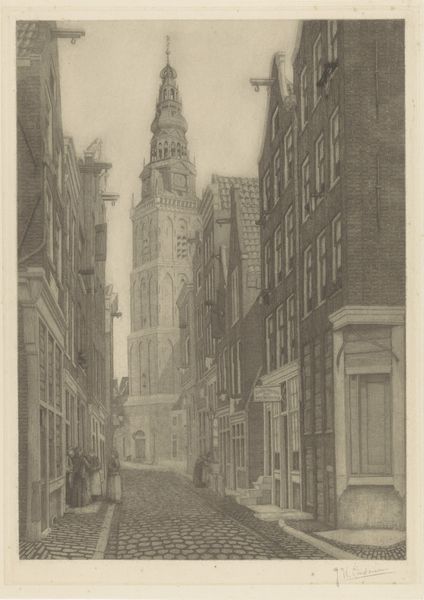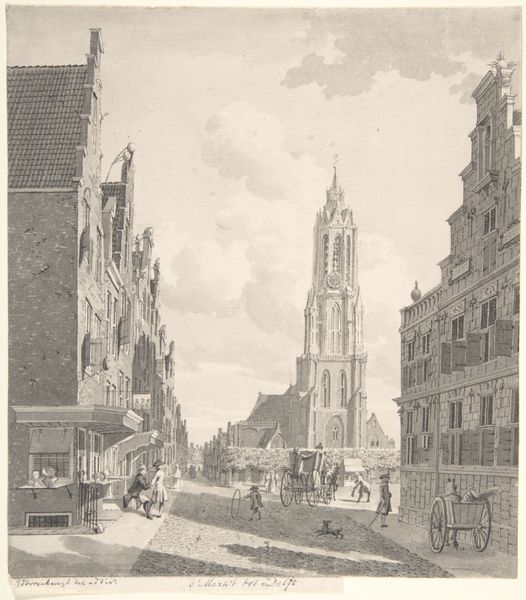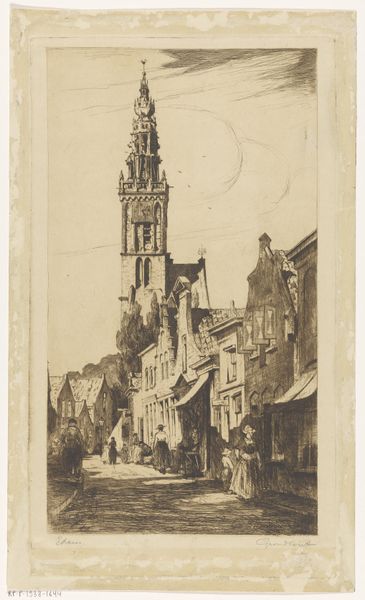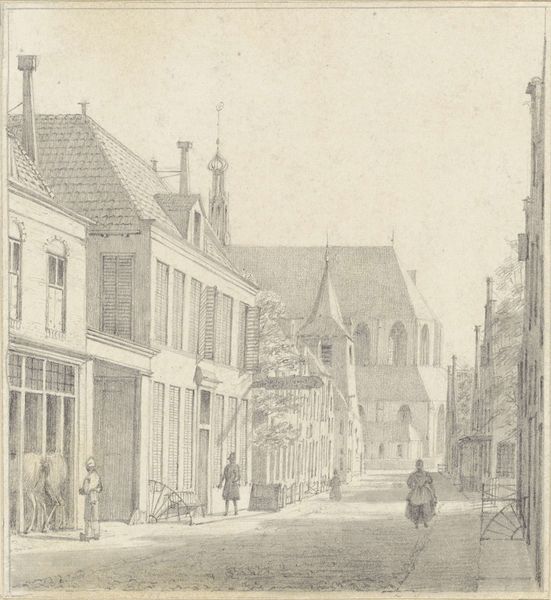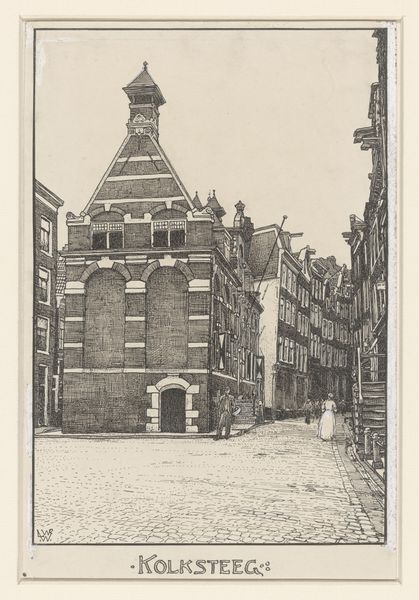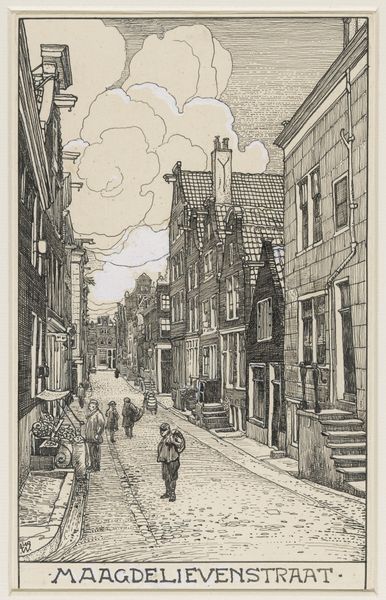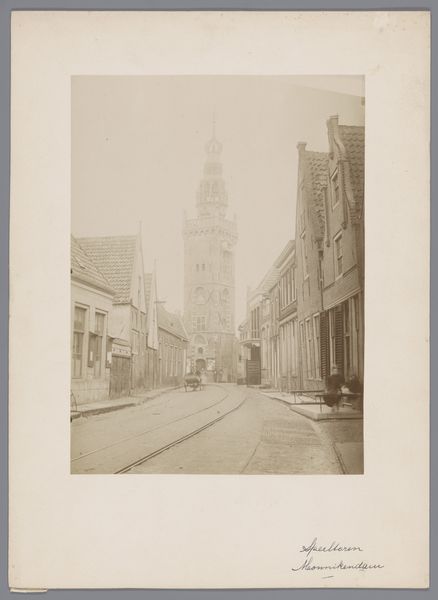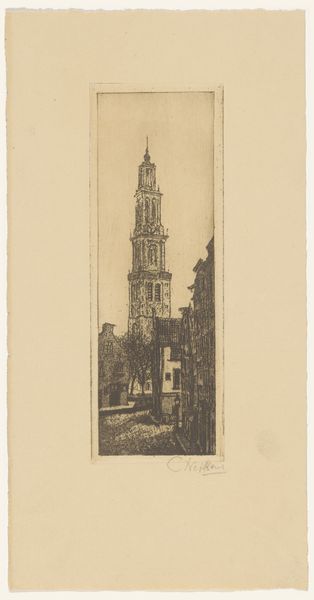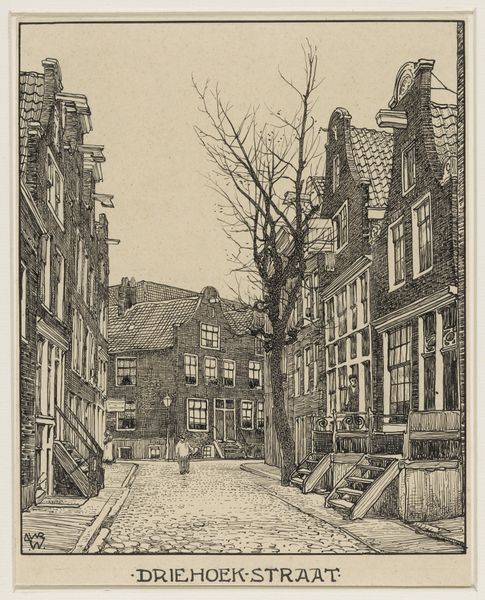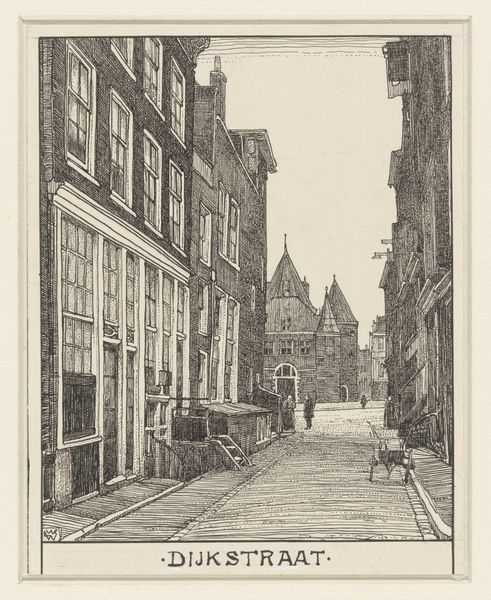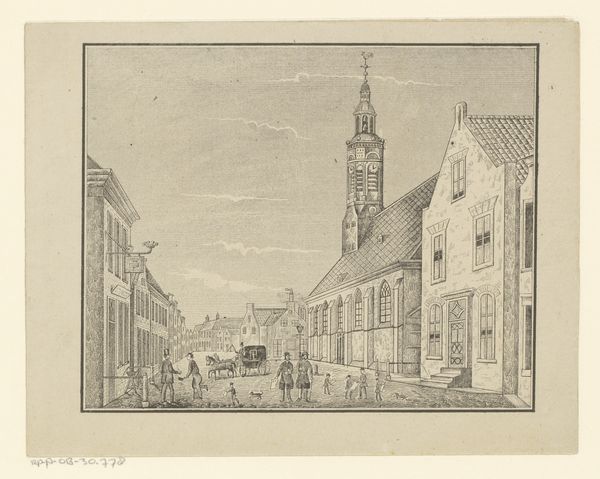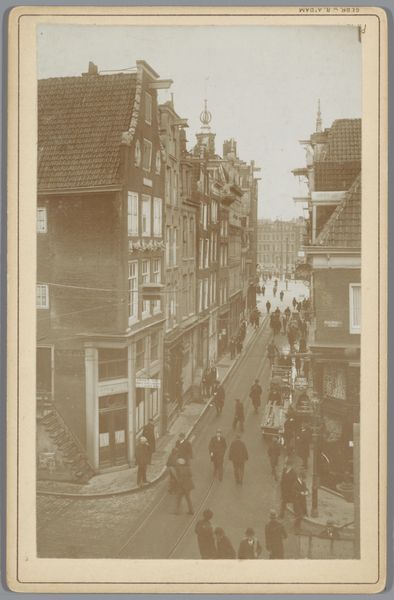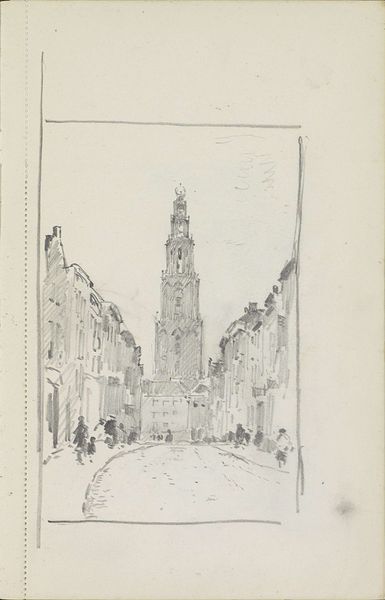
drawing, ink
#
drawing
#
dutch-golden-age
#
pencil sketch
#
ink
#
19th century
#
cityscape
#
street
#
realism
Dimensions: height 179 mm, width 115 mm
Copyright: Rijks Museum: Open Domain
Editor: This drawing, "De Egelantiers Dwarsstraat te Amsterdam," created with ink and pencil sometime between 1870 and 1926 by Willem Wenckebach, really captures the stillness of this street scene, doesn't it? I'm struck by how the artist uses line and shading to create depth. How do you read the composition of this piece? Curator: The effectiveness of the piece lies precisely in its orchestration of contrasting linear elements. Consider the orthogonal lines defining the street and buildings, which are then counterpointed by the subtle tapering as the street recedes into the distance. This, combined with the variation in line weight, dictates the viewer’s gaze toward the focal point: the distant tower. Editor: So, you're saying that the lines aren't just descriptive; they're directing our vision? Curator: Precisely. Note the calculated arrangement of light and dark, achieved through the density and direction of the lines. This, in turn, modulates the tonal range and constructs spatial recession. The structural elements—the lines, the tones—aren’t merely representational. They articulate the very architecture of the image. Editor: That's fascinating. I hadn't thought about how the lines themselves create space, almost independently of what they depict. Did Wenckebach play with this in other works, perhaps distorting perspective for effect? Curator: That’s an interesting line of inquiry. Analyzing other works by the artist might reveal consistent patterns in how he manipulated linear perspective and tonal arrangements. Editor: I see what you mean! It seems so obvious now. It makes me look at drawings in a whole new way. Curator: Indeed. Engaging with art in this manner allows us to see beyond mere representation and delve into the intrinsic language of visual forms.
Comments
No comments
Be the first to comment and join the conversation on the ultimate creative platform.
